Many loved the unusual taste of eggplant, a wide selection of which is presented in vegetable stores. But every summer resident wants to feast on this representative of Solanaceae from his own garden. However, growing eggplants and caring in the open ground have subtleties that you should get to know before starting work.
Material Content:
Varieties of eggplant for open ground
Today, breeders have bred many varieties of varied colors: traditional blue, striped, red, orange and green varieties. Their tastes are very similar, but to decorate the festive table, using a multi-colored palette is an excellent solution.

Vegetable growers opt for varieties that have established themselves as high-yielding and universal for different agroclimatic cultivation zones.
Black handsome.
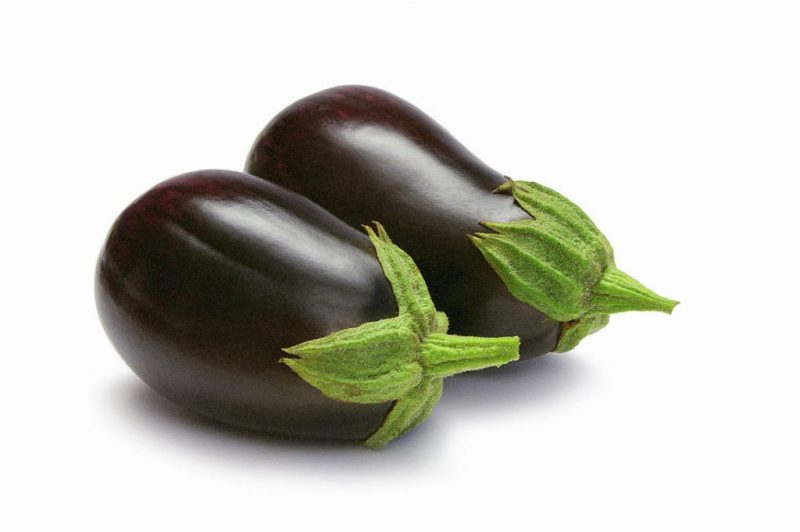
A popular high-yielding variety in areas with hot summers. Among the advantages stand out: weight of 200 g, excellent taste without bitterness, disease resistance and suitability for long-term storage.
Diamond.
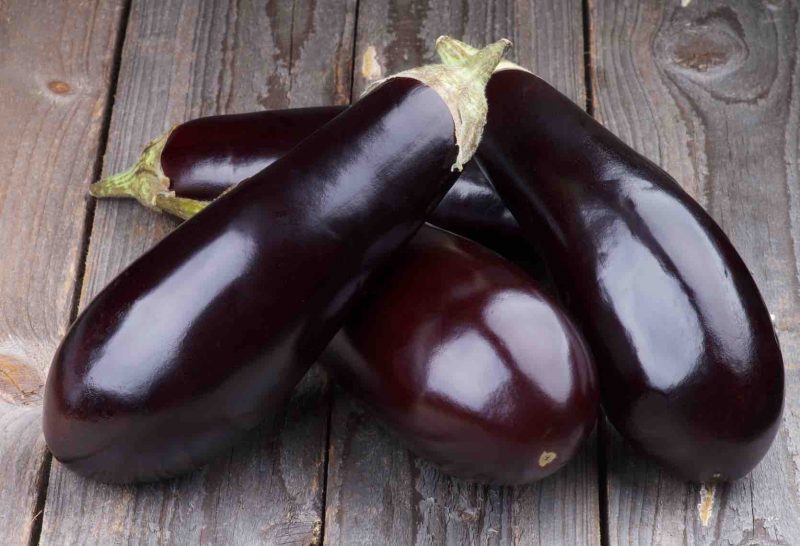
The variety, which has been recognized by many gardeners for its delicate taste, has cylindrical fruits with a weight of 100-200 g and a maximum length of 20 cm. The vegetable is painted in traditional purple color.
Albatross.

It is also a high-yielding variety, the blue-violet fruits of which have a pleasant to the taste pulp without a bitter aftertaste. The vegetable is distinguished by a shortened shape, resembling a pear, and weighing 450 g.
Epic.

The hybrid, whose early ripening allows cultivating it in different agricultural zones, also demonstrates a high level of yield and resistance to a wide range of diseases.
Basic requirements for growing
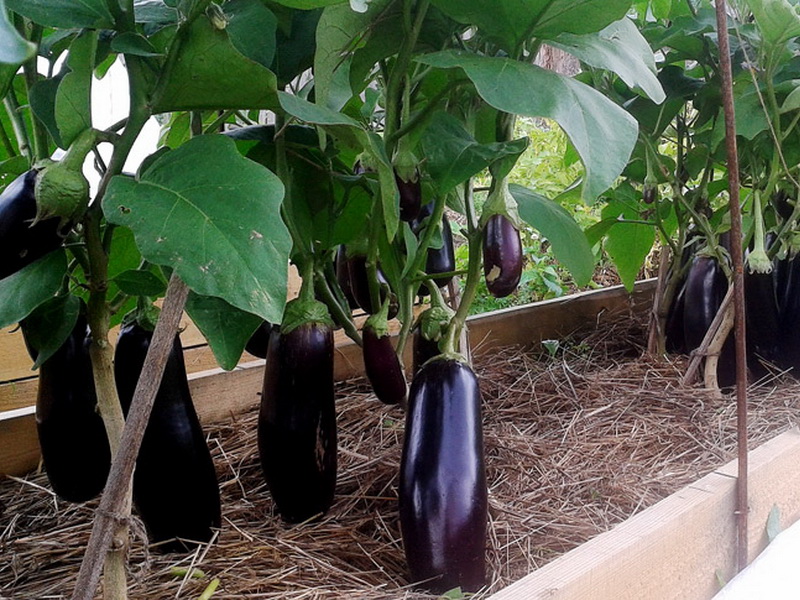
Although the plant belongs to the Solanaceae family, the requirements for its cultivation are not similar to the rules for growing tomatoes, peppers and other representatives.
- Eggplants need more heat: lowering the temperature below a value of 20 ° C leads to the cessation of pollination of plants and the development of fruits.
- Return frosts are detrimental to culture.
- Moisture deficiency provokes falling flowers and ovaries, and also causes the formation of ugly fruits.
- The plant needs bright, but not prolonged lighting - a maximum of 12 hours.
- Light and fertile soil is the key to a good harvest.
Compliance with the organizational and economic measures - crop rotation - plays a significant role in obtaining the result: the cultivation of eggplant is allowed on the same bed with pepper and tomatoes, but not after them. Bad predecessors for the culture are all solanaceous, the rest of the vegetables are considered as acceptable predecessors. The best choice for eggplant are carrots, cucumbers, onions, early cabbage, and gourds.
Growing seedlings at home
The thermophilic nature of the culture indicates that it is better to grow it through seedlings.
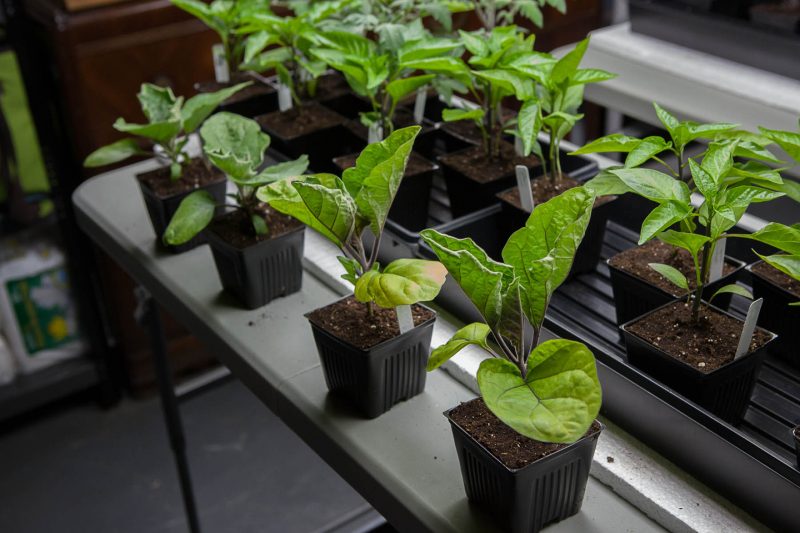
To do this, follow these steps:
- Using a solution of potassium permanganate, disinfect the seeds, and then heat-treat them by placing them in hot water at 50 ° C for a quarter of an hour.
- Prepare a soil mixture of turf land, humus and sand in a ratio of 5: 3: 1, and supplement it with a mineral additive containing nitrogen, phosphorus and potassium.
- Sow seeds in a container with prepared soil mixture.
- Place the box until germination occurs in a room with a temperature of 25 ° C.
- After the appearance of sprouts for a week, lower the temperature in the daytime to 16 ° C, and at night to 13 ° C.
- At the end of this period, seedlings are grown at the following temperature values: in cloudy weather at 18 ° C, in sunny weather at 28 ° C.
- When the first pair of true leaves is formed, feed the seedlings with a solution of superphosphate, urea and potassium salt.
- After a two-week interval, repeat top dressing.
- Two weeks before the seedlings are planted on the bed, they begin to be hardened by taking the box to the street.
- After the third pair of true leaves is formed on the plants, plant them in open ground if stable warm weather conditions are established.
Attention! Eggplant seedlings need systematic moisture to prevent drying out of the soil.
Eggplant planting in open ground
With the seedling method of cultivation, the grown seedlings are abundantly watered 24 hours before planting, then the procedure is repeated before the seedlings are removed from the tank.
Read also:eggplant - growing and maintaining in a greenhouse
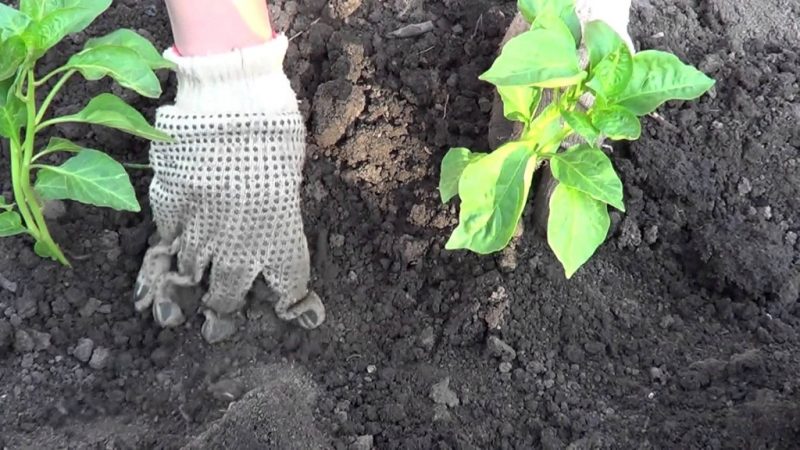
Landing is as follows:
- holes are prepared in the bed according to the scheme: between plants in a row - 40-50 cm, the distance between rows - 70 cm;
- prepared landing pits are abundantly filled with water;
- seedlings are planted in the obtained mud mixture;
- the soil around the plant is compacted;
- dry soil or peat is poured over it as mulch.
In the seedless method, seeds prepared in the same way as for sowing in boxes are sown in open ground when the temperature of the surface layer reaches 15 ° C. At the initial stage, the tradition of vegetable growers to sow eggplant seeds with radishes is associated with slow growth rates of the crop. This allows you to not lose the rows of eggplant in the garden.
Immediately after sowing, it is better to install a design of eggplant with metal arcs with a film stretched over them. The protective film should not be completely removed until the middle of June, when the threat of freezing frost passes.
Advice! To maintain a fertile soil layer, during the spring digging of the site intended for the cultivation of eggplant, one tablespoon of urea, superphosphate and potassium sulfate should be applied per 1 m2.
Crop care
Integrated eggplant care consists of such basic tasks as top dressing, watering, forming a bush and protecting the plant.
Fertilizer application
Eggplant top dressing in the open ground during their growth is carried out on average three times:
- Before the ovary appears, fertilizing with complex mineral fertilizers is carried out.
- In the fruiting phase, a solution of nitrogen-phosphate fertilizers prepared from a tablespoon of superphosphate and a teaspoon of ammonium nitrate per 10 l of water is introduced under the culture.
- In wet and cool summers, eggplants are fed with trace elements in a foliar way.
Watering and loosening
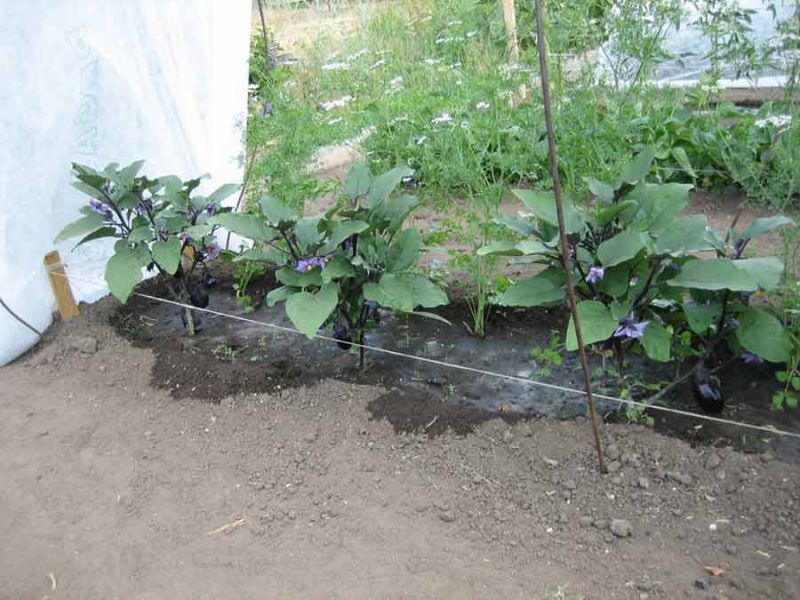
Eggplant is a very moisture-loving culture. During the growing season, he needs to water twice a week, and in hot summer conditions it will be more correct to water it every other day. After wetting, the trunk area should be carefully loosened: the formation of a crust depresses the culture.
Bush formation
Proper bush formation directly affects the future crop. The correct bush should consist of a maximum of three stems, for the role of which the three strongest shoots are selected. After the bush is formed, new shoots are removed when their length reaches 5 cm. Leaves that shade the sun's rays are also subject to removal: the ovary forms on the plant only when the sun hits the flowers. To prevent the shoots from breaking, a trellis is stretched over each row, to which the plants are tied.
Plant protection against diseases and pests
The main harm to the culture is done by the Colorado beetles, which are able to destroy it completely. In order to prevent this, it is necessary first of all to observe the agricultural technology of cultivation: soil preparation, crop rotation and others. If settlement has occurred, then you should resort to spraying the bushes with insecticides, not forgetting the period of toxicity: chemicals should not be used after the formation of the ovary.
Harvesting and storage
On average, you can start harvesting after 30-40 days after flowering, not forgetting to protect the hands and the plant itself. The fruit is cut off with the stalk using a pruner or table knife. All crops must be harvested before the frost. If it happens that there are bushes with a large number of unripe large fruits, they dig out and transplant into a greenhouse, where vegetables can achieve technical ripeness.
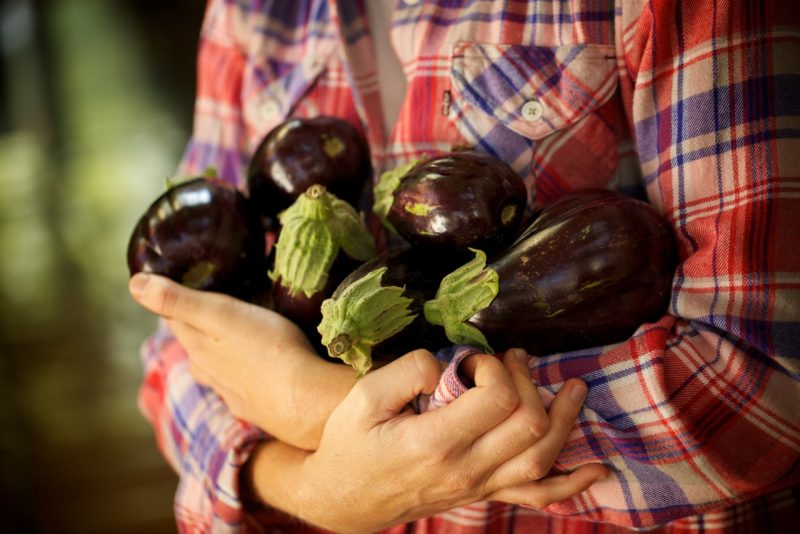
Attention! The resulting crop is stored in a cool, dry room for one month.
So, when cultivating this crop, one may encounter a number of difficulties, since eggplant is very demanding. However, if you correctly approach the process and carry out comprehensive care for the eggplant, the spent energy will pay off with interest.












